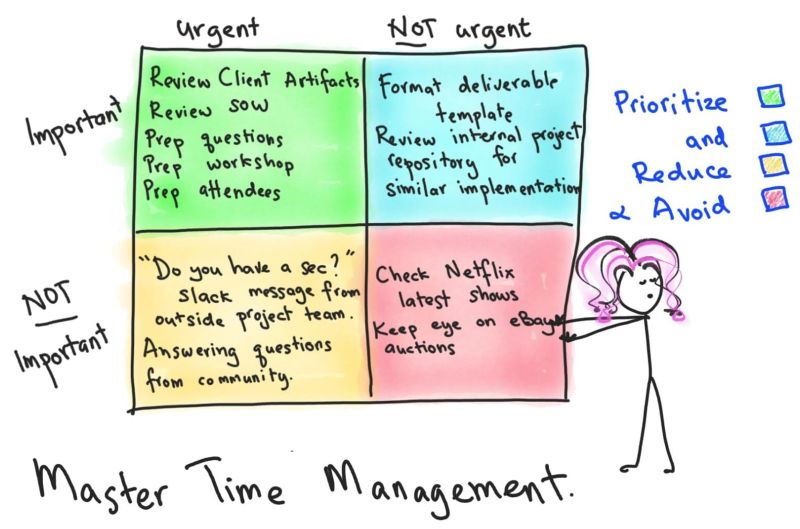𝗧𝗶𝗽 𝟰: 𝗠𝗮𝘀𝘁𝗲𝗿 𝗧𝗶𝗺𝗲 𝗠𝗮𝗻𝗮𝗴𝗲𝗺𝗲𝗻𝘁
In other words: Learn how to Remove Non-Value Add Activities.
#SalesforceConsultants are usually pretty autonomous, in that – there should be no Project Manager or Team Lead giving you detailed tasks and sitting on your shoulder with a whip, micro managing your progress.
Although I do know that there are some PMs who exhibit this not-very-nice behaviour. 🤨
Anyway, what that means is that you will have a broad remit, e.g. understand the client’s Sales Cloud requirements by planning the workshops, identifying processes in scope and questions to ask, absorbing artefacts and doing prep-work etc.
It will be up to 𝘆𝗼𝘂 to decide your daily tasks and prioritise your workload.
This means that you will need to really master your to-do list.
As a #BusinessAnalyst (which most client facing Salesforce Consultants are), you’re likely to be the key liason between client end-users, key stakeholders, project leadership team, your own project team, your project manager and various partners.
This also means that there will be lots of people lobbing items at you, maybe screaming, “This is URGENT!! ATTEND TO THIS! NOW!” 😫
You will need to learn how to manage, deflect, reject, accept, prioritise these incoming items, and potentially reprioritise existing workload gracefully.
When this happens, it requires Emotional Intelligence in terms of
– Self Management to manage internal boundaries 🔲
– Social Awareness to understand and identify the source of the other party’s urgency and desperation (a lot of requests sound ‘desperate’ and need sifting to get to the real reason) 🔥🧯🚒
– Social Intelligence to manage the situation
I usually start with the basics of Covey’s Time Management quadrant, asking questions around:
– Urgency vs Importance of tasks
– who/what is it urgent/important for – e.g. client? project delivery? external partner? internal project team? who?
There’s an adage:
𝗣𝗼𝗼𝗿 𝗽𝗹𝗮𝗻𝗻𝗶𝗻𝗴 𝗼𝗻 𝘆𝗼𝘂𝗿 𝗽𝗮𝗿𝘁 𝗱𝗼𝗲𝘀 𝗻𝗼𝘁 𝗻𝗲𝗰𝗲𝘀𝘀𝗶𝘁𝗮𝘁𝗲 𝗮𝗻 𝗲𝗺𝗲𝗿𝗴𝗲𝗻𝗰𝘆 𝗼𝗻 𝗺𝗶𝗻𝗲.
While broadly true, this is NOT a blanket truth when you’re dealing with customer issues.
Being a Consultant with high EI will be able to differentiate it and handle the situation well. However, most will still for the the “Do you have a sec”itis virus that inhabits dangerously in the depths of the slack channels and emails 😰
So beware! 😁
Do you fall for the “Do you have a sec?” line?
#OnThePeiroll
#TimeManagement
#Leadership
—
To be clear, sometimes binging on Netflix actually lies in the ‘Important – not urgent’ box, for example when you need to de-compress after a particularly stressful day.
My point here is to be very mindful about how you categorise your activities so that the URGENT & IMPORTANT box remains as small as possible.
*This is part of the ‘How to be an Emotionally Intelligent #SalesforceConsultants series. Links to previous tips in comments below. Stay tuned for more!

